how-to
- First you have to find you Kindle serial number.
- Then you can follow this instructions to instal the DeDRM_tools plugin
- Go to Amazon’s website and sign in to your account.
- Under
Account & ListsselectContent and Devices. - Go to the
Devicestab. - Select the desired Kindle device from the list.
- Expand the window to see the serial.
The Global Search and Replace is yet another incredibly useful #Obsidian plugin that lets us find and change specific text in several notes at once. It really helped me with my most recent project, where I had to change a few details in so many notes.
How to create a specific Bluesky password for each App
By creating a specific password for each app, you not only avoid sharing your Bluesky password, but you can also easily revoke access if you need to.
Go to Settings and then click on Privacy & Security. The option we are looking for is App Passwords. Click on it, and if it’s your first time there, you’ll only see the Add App Password button (1). However, as shown in the image below, in my case, there are already some passwords that can be revoked by clicking the trashcan icon (2).

To create a password, click on the Add App Password button and type a name in the box. I always type the name of the app where I’m using that password. It will help me remember where you used that password, in case I want to revoke it in the future.
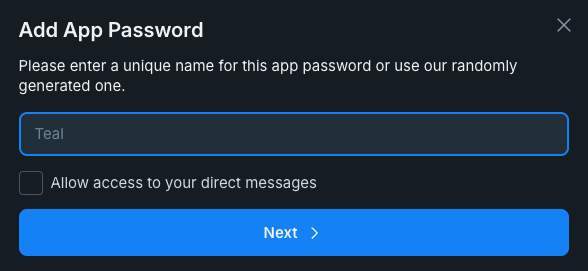
There’s also a box to Allow access to your direct message . This is precisely what it says, and that’s why I prefer to never check that box. But, of course, it’s up to you.
I freed my Kindle library and have it synchronized with all my devices
First, I converted the books to ePub using Calibre. Next, they joined my Timeline System in Obsidian for automatic synchronization across all devices, Supernote included.
Like many other modern conveniences, the Kindle ecosystem is built to keep us locked in. As you know, I’ve been taking down walls around digital goods I won, and now it’s time to do it with my books. This project has been on my list for a long time, but it was a recent feature removal from Amazon that motivated me to finally pull the trigger.
We used to be able to go to Amazon.com and download our Kindle books, but that’s not possible anymore. A while ago, when Amazon announced the policy change, I downloaded all my books. If you haven’t done that, I believe you can still have access to them by connecting your Kindle to a computer and manually coping the books.
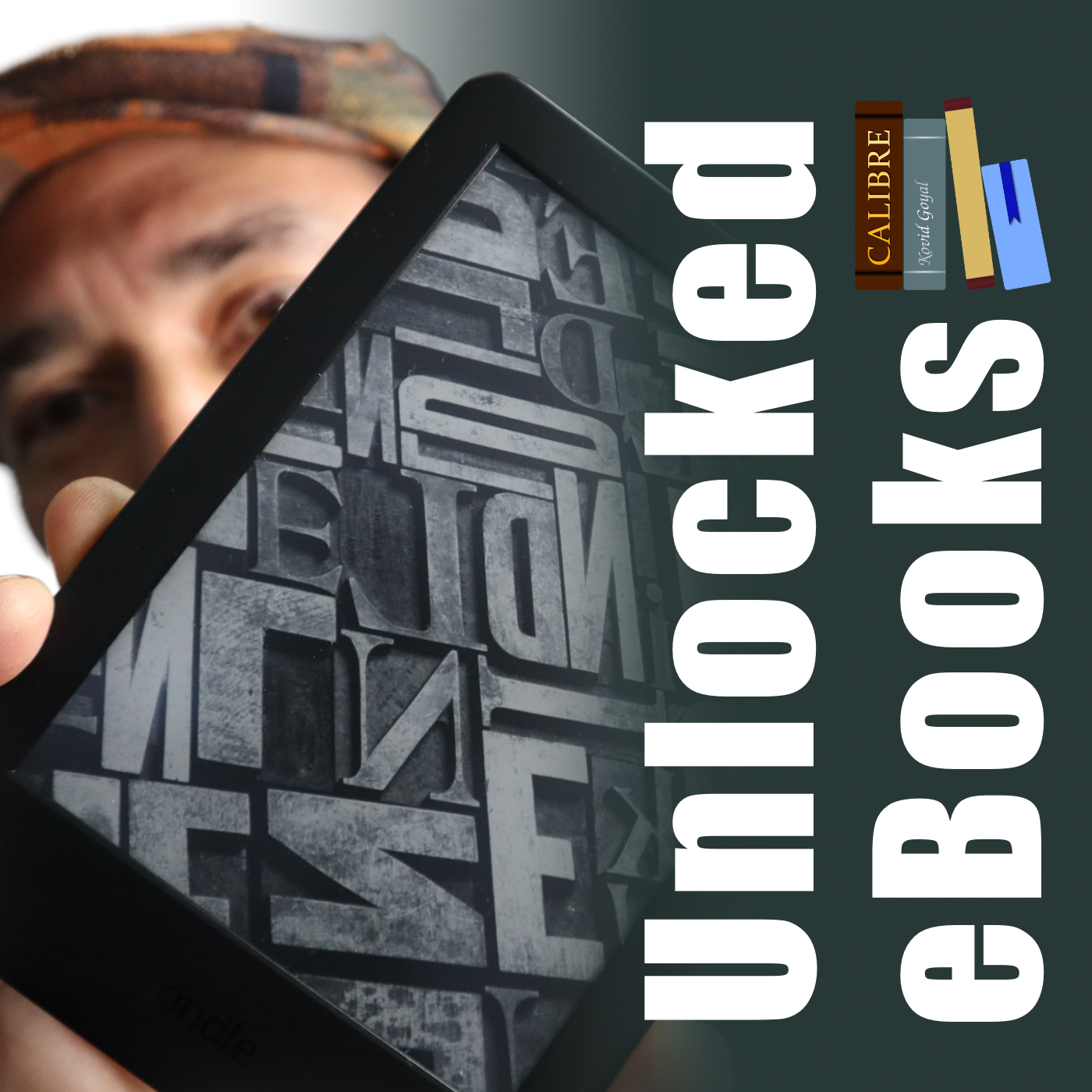
But having the books is just part of the process, as the majority of them are linked to your account via what’s called DRM. Additionally, Amazon uses a proprietary format instead of ePub, which is more widely adopted by e-book readers. In other words, it’s like having your books locked in a box that is locked in another box.
Calibre is the master key that can help us with all of these locks. Additionally, it works as a library management software, keeping all the books in a folder on our computer. That’s just perfect for the Digital Caveman project, right?
When you are first installing the app, it will suggest a folder for your library, but you can change it to what better suits you. In my case, I created a new Static Container (folder) called ‘eBooks’. And because the files in my Timeline System structure synchronize with multiple devices, my library is now widely available. But I’m getting ahead of myself.
As a tip, you can also move the library to a different folder in the future. Just click on the ‘eBooks’ button on the toolbar to choose a new location.

Next, we need to prepare Calibre to be able to remove the DRM from our books. This is done in two parts. First, we need to install and set up a plugin. It’s only after doing this that we’ll be able to tell Calibre to remove the DRM and convert the books to ePub.
Preparing Calibre
Add the serial number to the box and that’s it.
Converting to ePub
With all the above done, go to Calibre’s main window and click on the ‘Add books’ buttons. Select one or more books, and they will be added to your library’s folder.
Next, select one or more books in the list and click on the ‘Convert books’ option. You’ll see a new window with countless details that you can tweak on each book. There are even several formats available in addition to ePub, which is the pre-selected on. In my case, I kept everything as it was and clicked on the button to convert.
The Supernote
To understand how my books are being automatically sent to my Supernote, I suggest watching the video below.
But remember, the books are in my Obsidian Vault. And looking at how Calibre creates folders for each author, I’m already having insights about making those folders somehow connected to other content I have in Obsidian. Especially the ‘Knowledge Base’ notes, which share a strong relationship with the books I read. And that’s one of the reasons I chose to set the ‘eBooks’ folder as a Static Container.
The Digital Caveman Project
There are plenty of details I still would like to adjust, but all the digital content I create and own is now local first and free from walled gardens. In other words, 100% under my control.
In addition to my notes and website being created in Obsidian, my music, photos, now my books, every single file I use for my personal life and work, and even my passwords, are on my computer first. I even have my own ‘cloud’ system and a backup strategy.
🪨 I did it!
How to instal the DeDRM_tools plugin
Download the DeDRM_tools plugin, unzip the folder, and set it apart. Next, go to the Preferences under the Calibre menu option. At the bottom of the page, you’ll see the Plugins button. Click on it. Next, click on the button Load plugin from file.
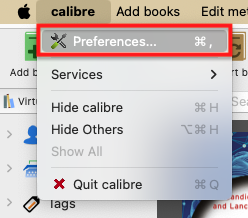
Navigate to the DeDRM_tools folder on your computer, find and select the DeDRM_plugin.zip file. Click on Open, and you’ll see a dialog box asking if you are sure. Click on Yes and in the next dialog box, also on OK.
Now we need to provide the plugin with your Kindle serial number. There are many plugins already installed, so if, for some reason, you can’t see the one we just installed, simply search for DeDRM. Select it and click on the Customize Plugins button and then on Kindle eink ebooks.
You will be asked for your Kindle Serial Number. Add the serial number to the box, and that’s it.
How to find Kindle's serial number
How to install a Micro SD Card on the Supernote Nomad
Follow along with me and learn how to open the Supernote Nomad and install a Micro SD Card.
How to install Android apps on a Supernote using a Mac
The first step is to prepare the Supernote to receive Android apps. Go to Settings, then Security & Privacy, and then turn on Sidloading. This means that you are allowing the Supernote to accept the installation of Android apps.
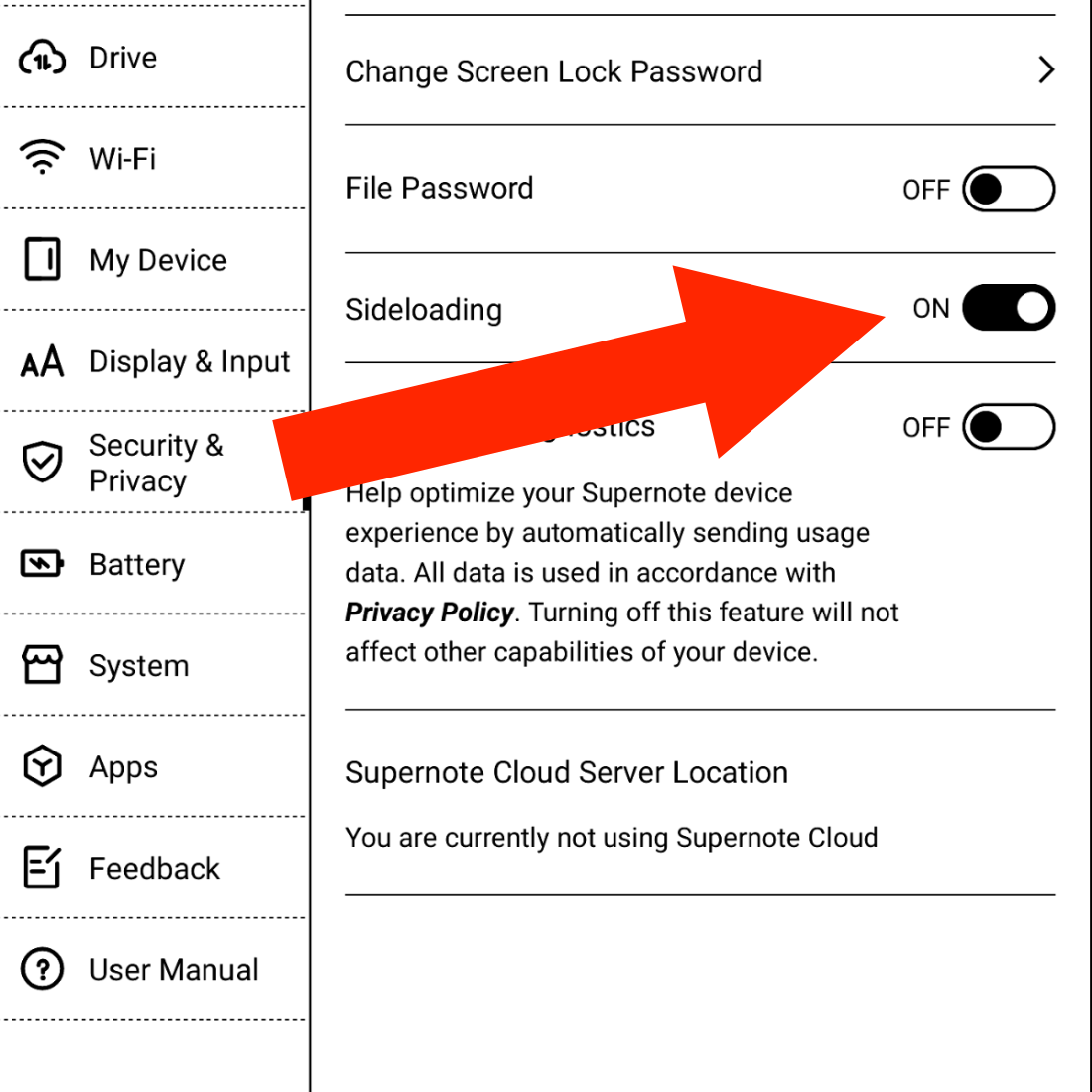
Next, we have to make sure the Supernote can connect to the Mac. Under the hood, the Supernote is an Android device, so we will need to install an app on the Mac to allow both of them to talk to each other. This step was a bit of a pain for me. After trying different options, MacDroid was the one that worked. If that does not work for you, please search for other options on Google and try them.
I suggest using the Supernote USB cable, as not all USB cables are the same, technically speaking.
Now we need to get the Android apps ready. Obsidian offers the APK on its website, which, I think, is an excellent practice, as they are the company behind the app.
I am also using Syncthing-Fork, which I downloaded from the developer’s GitHub page. However, if you are using Obsidian Sync, you don’t need Syncthing. Please download either one or both and place them aside for now.
Next, download and install Homebrew. You’ll find the instructions on their website. Just follow the steps. This app is needed to install the next app on your Mac.
Now download the Android SDK Platform-Tools, which is what will actually talk to the Supernote. To install it, you’ll have to use a command on the Terminal.
To open the Mac Terminal, hold the Command key and press the Space Bar. Type Terminal in the search box and click to open the Terminal. In the Terminal window, write the following code:
brew install android-platform-tools
When you hit Enter, Homebrew will install the Android SDK Platform-Tools on your computer. You’ll see some code scrolling on the screen and then a message that says it was installed successfully.
Now it’s time to connect your Supernote to the computer, and make sure MacDroid can see it as a device.
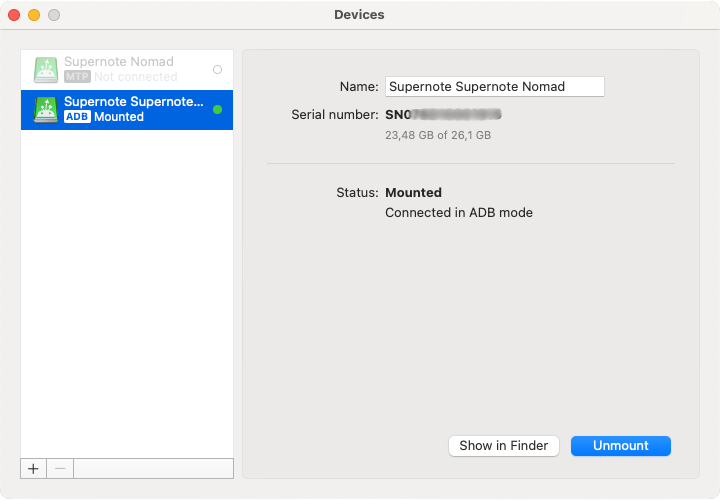
If you get a screen like the one above, go back to the Mac Terminal and type the code below to make sure the system is seeing it:
adb devices
You should get a message similar to the one below.

Finally, it’s time to install the Obsidian APK (Android file). Go back to the Mac Terminal and type adb install, followed by the path to the APK file on your computer. In my case, it looks like this:
adb install /Users/office/Downloads/Obsidian-1.7.7.apk
Alternatively, you can type adb install, hit space, and using the mouse, click and drag the APK file to the front of the command. That will create the path for you. Hit Enter and wait until you see the success message.

That’s it. To install other apps, repeat adb install command, adding the path to the app on your computer.
How to customize the Tiny Theme Archive page on Micro.blog
In a recent video, I told Manton, the creator of Micro.blog, that I would prefer if the blog categories on the Archive Page were horizontally displayed, instead of the current list. To my surprise, the solution arrived a day after I published the video.
When Otávio finished listening to the episode, he wrote a code (below) to do just the task. Now it’s my turn to give back to the community. The video below shows how you can use Otavio’s code to customize your own Archive page.
{{ define "main" }}
<div class="archive">
<h2 class="p-name">Archive</h2>
{{ if templates.Exists "partials/microhook-archive-lead.html" }}
{{ partial "microhook-archive-lead.html" . }}
{{ end }}
{{ $list := ($.Site.GetPage "taxonomyTerm" "categories").Pages }}
{{ if gt (len $list) 0 }}
<div class="archive-categories">
<h3>Categories</h3>
<span>
{{ $sortedList := sort $list "Title" }}
{{ $length := len $sortedList }}
{{ range $index, $element := $sortedList }}
<a href="{{ $element.Permalink }}">{{ $element.Title }}</a>{{ if lt $index (sub $length 1) }}, {{ end }}
{{ end }}
</span>
</div>
{{ end }}
<div class="full-archives h-feed">
<h3>Full Post List</h3>
{{ $list := (where .Site.Pages "Type" "post") }}
{{ range $list }}
<p class="h-entry">
<a href="{{ .Permalink }}" class="u-url"><span class="dt-published" datetime="{{ .Date.Format "2006-01-02T15:04:05-0700" }}">{{ .Date.Format "Jan 2, 2006" }}</span></a>:
{{ if .Title }}
<span class="p-name"><b>{{ .Title }}</b></span>
{{ end }}
<span class="p-summary">{{ .Summary | truncate 150 }}</span>
</p>
{{ end }}
</div>
</div>
{{ end }}
What is Markdown and how to use it
Markdown is a set of characters used to format text in compatible editors. For example, if you put one asterisk on *each side of a word or sentence*, the Markdown editor will show it in italics like this: each side of a word or sentence.
To use it, all one has to do is memorize a small set of symbols and use them in a compatible editor. Since there are not a lot of formatting options, dominating and using Markdown is not hard.
Another way to think of Markdown is as a simpler version of HTML, which is the language used to make the pages you access online with a browser.
Related